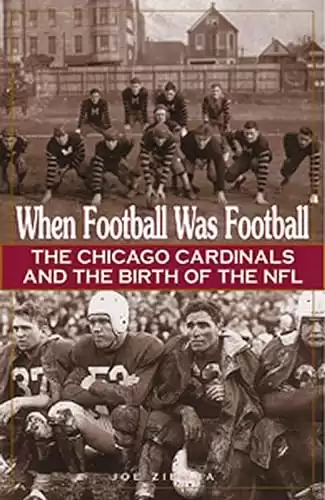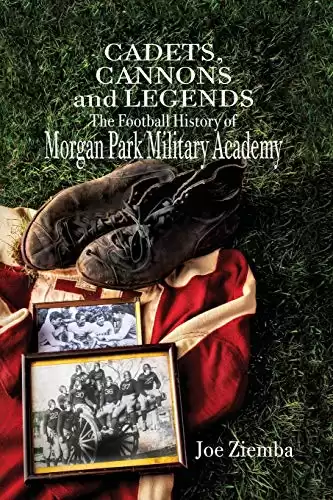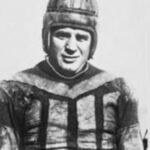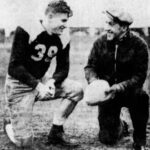In 1950, the Chicago Cardinals faced a challenging coaching predicament. After Jimmy Conzelman retired in 1948 following two straight trips to the NFL championship game, the club named Phil Handler and Buddy Parker as co-head coaches for the 1949 season. That experiment lasted only five games before Handler was booted upstairs while Parker was appointed as the sole head coach.
Parker finished the full schedule (6-5-1) but resigned following an awful 52-21 loss to the Bears in the season finale, saying, “I’m tired of being a head coach. The duties are too demanding and it’s tough for a young coach to beat the old pro hands.” Who would the Cardinals seek to restore the Cardinals to the heights of the 1948 campaign, when the squad finished with an 11-1 regular season slate, the best in team history?
On February 1, 1950, rumors were flying all over the place as the Cardinals prepared to announce their new head coach for the upcoming season. The Rock Island Argus reported on the secrecy: “Cardinals President Ray Benningsen and the successor to Buddy Parker are to appear at a press conference. Who it is to be is anybody’s guess.”
I Can Do A Better Job Coaching The Cardinals
And then came the big announcement: former Green Bay Packers boss Curly Lambeau would be the new head coach of the Chicago Cardinals in 1950. The Cards had wasted precious little time in signing Lambeau after his less than amicable resignation from the Packers in early 1950, prompting the Chicago Tribune to joyously predict: “Under Lambeau’s direction, the Cardinals…will enjoy the type of leadership necessary to sustain success.”
Lambeau himself added: “I am confident that I can do a better coaching job for the Chicago Cardinals than I did in Green Bay!” That was a pretty bold statement considering Lambeau had won six NFL titles with the Packers since he helped found the organization in 1919.
There was still a pulse on the Cardinals’ roster from the glory days of 1947 and 1948. Would Lambeau be able to resuscitate it? Violet Bidwill, the owner of the club, certainly believed that the hiring of Lambeau would breed success: “I am extremely happy over this acquisition of the fiery ex-Packer coach,” she said. President Ray Benningsen turned over the management of the Cardinals to Lambeau without hesitation: “Lambeau will have a free hand on the field and that’s no idle statement. I gave my word I would draw up no sure-fire plays for him!”
With lofty expectations in place for the Cardinals in 1950, there was nothing that would shock the team’s followers more than a failure to improve over the 6-5-1 slate in 1949.
The Cardinals started off fairly well in 1950 with a 3-3 record at the halfway point, but the club was able to crack the winning column only twice more that season. The biggest change that Lambeau initiated was virtually dismantling the Cardinals’ fearsome rushing attack when he traded title-winning quarterback Paul Christman to the Packers and handed the starting nod to promising passer Jim Hardy, previously with the Rams.

Intercepted Eight Times!
Lambeau, it seems, was content to transform the Cardinals into a passing team. The change in the Cards’ offense was evident to all around the NFL, including Tim Temerario, the chief scout for the Browns: “They look different than they did last year. Last year, Elmer Angsman, Charley Trippi, and Pat Harder really piled up the yardage running. Now, they throw more. They’re a solid football team, capable of giving us a big afternoon.”
All eyes were on Hardy in the 1950 opener against the Eagles on September 24. Lambeau was brimming with confidence and happily stated the day before the first game: “There isn’t a team in the league that has better personnel than the Cardinals and I know we’ll prove it tomorrow.” That prediction blew up quickly as the Eagles blasted the Cardinals 45-7.
Hardy unfortunately set an NFL record by being intercepted eight times in addition to losing a couple of fumbles. Imagine that? Ten turnovers! Clearly, Lambeau faced the need for an immediate turnaround and his efforts paid off the following week against Baltimore when the Cards rebounded to smash the Colts 55-13.
This time, Hardy reversed the performance from his ugly debut against the Eagles by tossing six TD passes as the Cardinals captured the easy victory. End Bob Shaw grabbed five of those touchdown passes to establish a new NFL record.
Later that season, Lambeau was completely surprised when Giants’ coach Steve Owen deserted his usual “T” formation and fooled the Cardinals by unleashing an “A” formation that befuddled the Cards’ defense, leading to an absurd 51-21 rout of Lambeau’s crew. After the game, Owen himself seemed quite surprised with the positive results of his offensive transition:
“We worked secretly with the ‘A’ formation all week. Our plan was to use it to give us a quick start against the Cardinals. But it worked so well against Chicago’s defense, which concentrated on an 8-man line, that we stayed with it all game.”
We Haven't Got Any Tackles and No Ends
Although a late-season 20-10 win over the Chicago Bears brought some satisfaction, the final mark of 5-7 under Lambeau in 1950 was quite disappointing. Things would not get any better as Lambeau and the Cardinals headed into the 1951 season. Due to retirements, trades, and defections to the Canadian league (including both Hardy and Shaw), the club was faced with a rapidly depleting roster.
Referring to the massive turnover of players, Cardinals’ scout Wally Cruice said: “Outside of that, we haven’t got any tackles, no ends, and one or two backs.”
Lambeau decided to move future Hall of Famer Charley Trippi into the quarterback slot in 1951 and Trippi responded well with his abilities to both pass and run the football. The Chicago Sun-Times praised an early season Trippi game performance: “Chicago professional football fans discovered…that so long as Charley Trippi is able to play quarterback, the Cardinals won’t field the worst squad in the National Football League.
Once his deception was so blinding that he drew the entire defense into the middle while he ran around his left by himself for a touchdown.”
However, a sluggish start in 1951 prompted whispers about Curly’s future. It became apparent that Lambeau was experiencing communication problems with upper management, his assistant coaches, and even his players.
Things began to unravel for Curly after he publicly questioned the play calling of quarterback (and fan favorite) Trippi following a 7-3 loss to Washington on October 21 that left the Cards with a 1-3 mark. This type of public criticism was highly unusual at the time and the well-respected Trippi fired back with his own comments in the New York American: “That’s a lie…
The Cardinals coaching staff called 90% of the plays. All the players know who’s calling the plays, and they’re behind me 100%.” Lambeau avoided an embarrassing all-out player revolt by meeting with Trippi and moving past the incident.
Lambeau's Made Mistakes
Following a 45-21 loss to the Rams on November 11, the team fell to 1-6, and Cards’ Managing Director Walter Wolfner stated: “Lambeau’s made mistakes…but we’re not going to take any hasty action.” There was a bit of a reprieve the following week when the Cardinals met the San Francisco 49ers for the very first time in history on November 18, 1951.
The visitors from Chicago emerged with a surprising 27-21 victory. “Actually, it was a game the 49ers didn’t deserve to win,” groused the Oakland (CA) Tribune. “They took the field in the first half like a lethargic bunch of bushers.” Ouch!
Two veteran mainstays of the Cardinals, Charley Trippi, and Elmer Angsman, provided most of the offensive fireworks for the winners. The Chicago Tribune reported: “Trippi turned in one of the best performances of his professional career. He completed eight out of 16 passing attempts for 189 yards, scored one touchdown, and carried the ball when vital yards were needed for first downs. Trippi carried the ball 16 times for 61 yards and thus was responsible for 250 of the Cardinals 392 yards.”
The other hero was halfback Angsman according to the Tribune’s game report: “Elmer Angsman, who became a father yesterday, went 70 yards for a touchdown in the second quarter after taking a pass from Charley Trippi.
It provided the turning point of the game. Trippi passed to Angsman, who gathered in the ball on the 30 and, refusing to wait for any blockers, sped down the field and didn’t pause until he had completed the scoring play.”
Harassed By Front Office Second Guessing?
It was just the second win of the season for the Cards while the defeat knocked the 49ers out of divisional title contention. The conquest over the 49ers would prove to be Lambeau’s last victory with the Cardinals. After two more losses, he resigned on December 7, 1951, with the Cardinals struggling with a 2-8 record.
Lambeau lamented the recent departure of team President Ray Bennigsen and hinted at administrative meddling with the on-field coaching activities. Lambeau told the Green Bay Gazette that “No man can do a satisfactory job if he constantly is harassed by front office second-guessing,” without mentioning Cards’ General Manager Walter Wolfner by name.
Cardinals’ management then publicly accused Lambeau of losing the trust of his coaches and players, while Lambeau shot back (in the Chicago Tribune) that “Club owners certainly don’t air this kind of thing in public. I felt I just didn’t fit into the Cardinals’ organization.”
Lambeau departed with a 7-15 overall coaching record with the Cardinals for the 1950 and 1951 seasons before his resignation. Long-time assistant Phil Handler finished off the 1951 season as head coach by dropping a decision to the Washington Redskins, but then knocking off the Bears in the season finale.
Amos Alonzo Stagg to Coach Cardinals?
Meanwhile, Wolfner predicted that a new coach would not be selected until after the season, but the Cardinals began considering a wide variety of candidates including 23-year-old local high school coach Terry Brennan (later hired by Notre Dame), former Redskins’ coach Ray Flaherty, former Packers’ great Cecil Isbell, University of San Francisco head man Joe Kuharich, former Bears’ standout Bernie Masterson, and even 89-year-old coaching legend Amos Alonzo Stagg! Joe Kuharich eventually landed the job, lasting just one season after compiling a 4-8 record in 1952.
Lambeau ended up coaching Washington in 1952 and 1953 finishing with a 10-13-1 record. He passed away in 1965 at the age of 67. While Curly will always be remembered for his legendary exploits in Green Bay, his brief time in Chicago has largely been forgotten…But one thing is for certain. Of all of the individuals who have coached the Cardinals in the team’s long history, Lambeau is the only Cardinals’ coach to have an NFL stadium named after him. Think about that one!
Author and Host - Joe Ziemba
Joe Ziemba is the host of this show, and he is an author of early football history in the city of Chicago. Here, you can learn more about Joe and When Football Was Football, including all of the episodes of the podcast.
Please Note – As an Amazon Associate I earn from qualifying purchases
Resources
More From When Football Was Football
Paddy Driscoll’s Almost Perfect Season
Back at the beginning of the National Football League in...
Read More120,000 Fans Witness High School Football Game in 1937!!!
Let’s set the stage… It was a warm November afternoon...
Read MoreIn The Beginning: An Interview With Joseph T. Sternaman
And, you may ask, who is Joseph T. Sternaman? Sternaman...
Read More1948: The Last Hurrah of the Chicago Cardinals
Cardinals’ fans are familiar with the long, sad story concerning...
Read More




